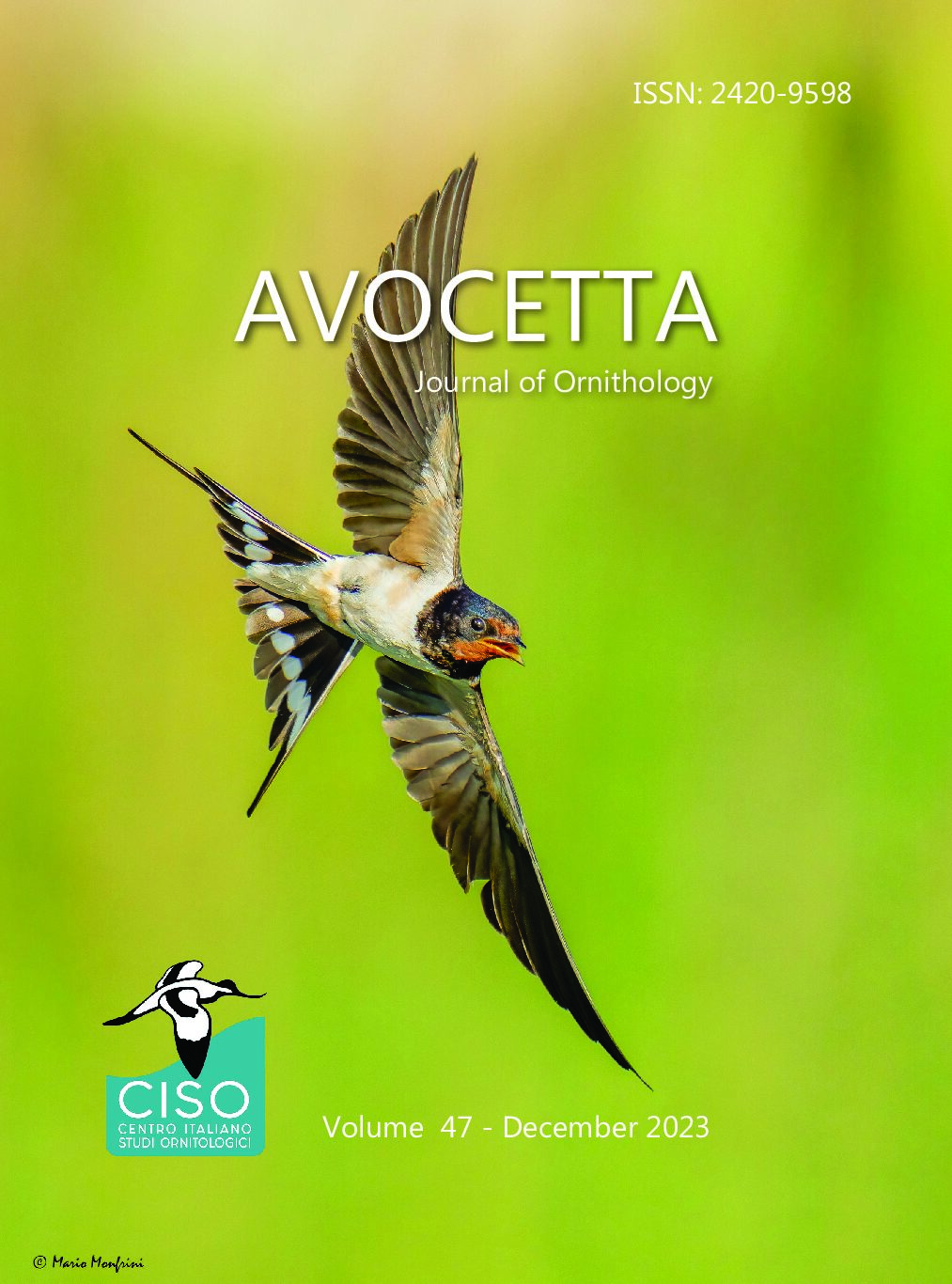
Volume 47
2023
Layout by Roberto Brembilla
Avocetta
Volume 47 continuous publishing
- Cover page - Issue 47 (full size) photo by Mario Monfrini
-
Editorial - All that glitters is not gold: The world of scientific publications and the challenges of publishing high-quality research
Roberto Ambrosini
-
Peri-urban wetlands as biodiversity hotspots: the approach study of the waterbird community seasonal variation of Arnovecchio oasis in Florence province (Tuscany)
Clara Sargentini, Roberto Tocci & Francesco Bimbi
-
Long-term monitoring of the Peregrine Falcon Falco peregrinus nesting in the Furlo Gorge State Nature Reserve (Marches, central Italy)
Maurizio Saltarelli & Marco Pantalone
-
Lesser Kestrel Falco naumanni diet during different phases of breeding and post breeding periods in central Greece
Christos Christakis, Maria Makri, Haralambos Alivizatos & Athanassios Sfougaris
-
Mapping the distribution of the Eurasian Hoopoe Upupa epops and the Pine Processionary Moth in Lebanon based on a Citizen Science approach
Leila Rossa Mouawad, Salim Kattar, Jad Rizkallah, Dany El Obeid, Samara P. El Haddad & Karma Bou Azza
-
What species are being researched and why? A bibliometric analysis of breeding birds in Italy
Maurizio Sarà
-
Diet and prey availability of the Black Wheatear Oenanthe
leucura in the El Hodna region (M’Sila, Algeria)
Fatima Boudrissa, Mourad Zemouri, Abdelazize Franck Bougaham
-
Short Communication - Gardening on oceanic islands: the non-native Great Kiskadee Pitangus sulphuratus as a potential seed disperser of the alien invasive Murraya paniculata in Bermuda
Letizia Campioni, Martin Beal
-
Columns - Italian Ornithological Commission (COI) - Report 31
Egidio Fulco & Cristiano Liuzzi (eds.)
-
Columns - Bird News, December 2023
Gaia Bazzi (ed.)
-
Columns - Book Review
Avocetta Editorial Board

